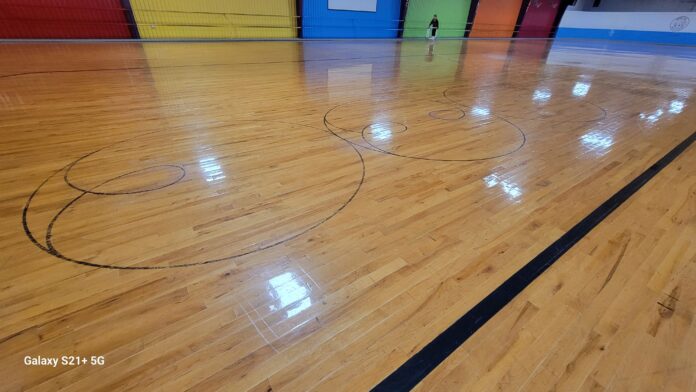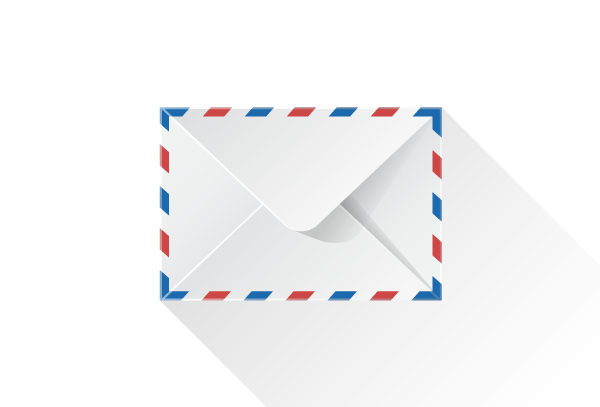If you’ve been to several roller rinks, you probably noticed that many have a bunch of stripes, circles, and lanes painted on the floor. They serve a particular function, and it’s just one way skaters can tell which rinks are serious about roller skating. Yet few sessions skaters understand why they exist.
New rink operators should always include these markings on the skate floor, in order to build skating skills among their regulars that will keep them coming back.
In no particular order, here is a list on what to include on your rink floor.
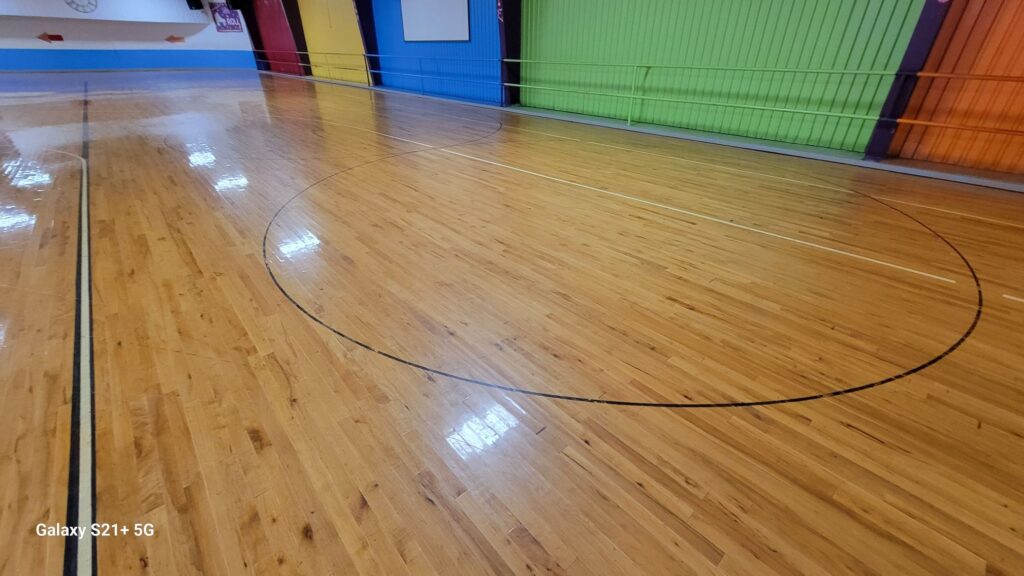
Figure Circles
If you look around the surface of the floor in a competitive roller skating rink, you’ll see giant circles, usually 3 of them together. Figure Circles are good to practice on to learn body memory and good form. Skating instructors use them during lessons, and advanced skaters become extremely proficient at tracing the circle on one foot, with one push to go around the entire circle. Then they will change to the other foot and do the same. The edges and direction (forward/backward) can become very complex, but they build strong skaters learning how to spin, jump, and hold long spirals across the skate floor. There are also competitive events based on how one traces the circle with the skate.
The figure circles can be placed throughout the floor because skate practice and public sessions don’t happen simultaneously, however having a set of figure circles in the center of the floor is helpful for any skater who wants to practice during a session, without hindering traffic in the skate lanes.
Note, the circles have an exact size for consistency and competitive events.
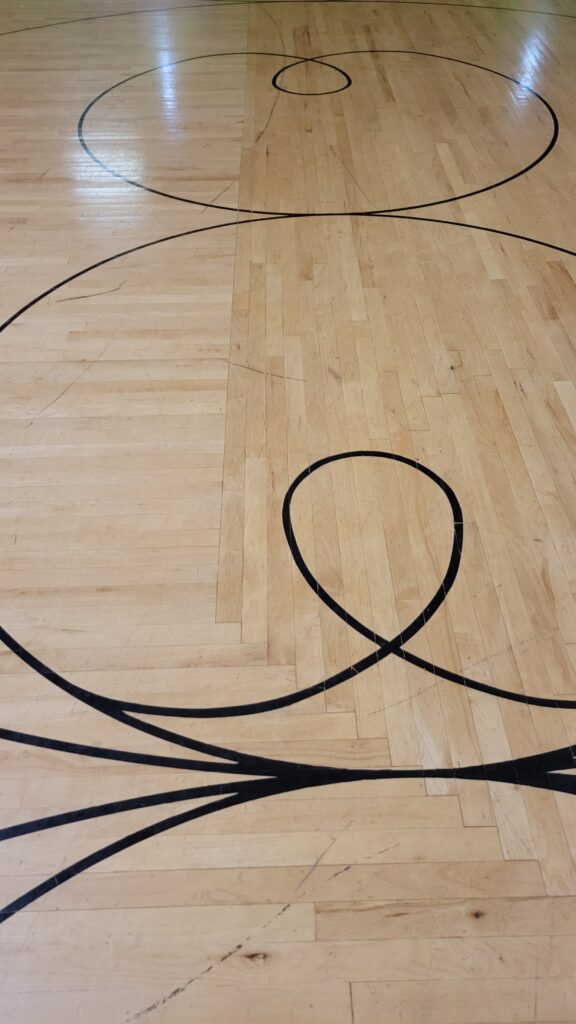
Loops
Loops:
Loops are much smaller than figure circles and have a loop for advanced skaters to trace — this sets them up for more difficult turns and spins. There are also competitive events for loops.
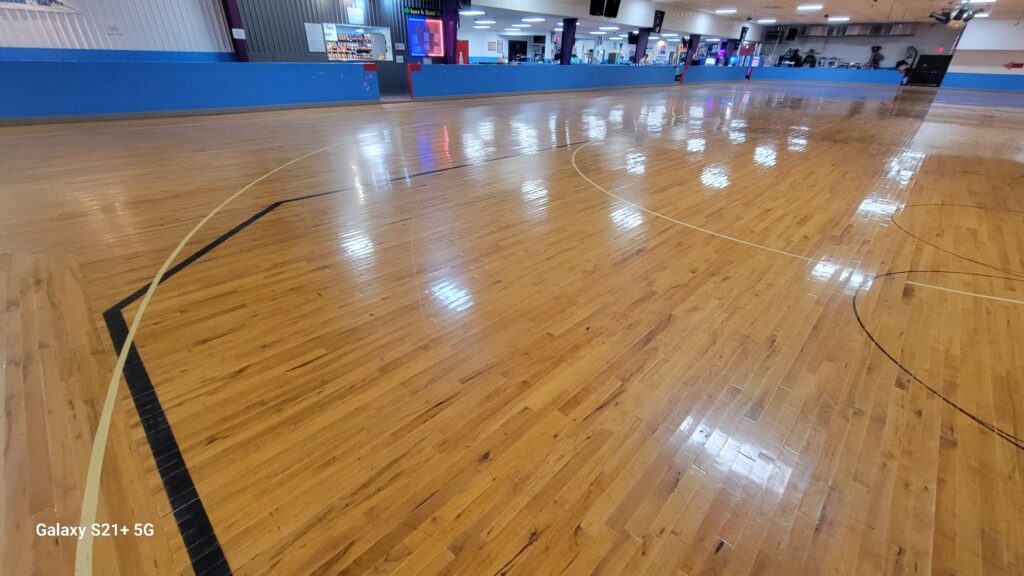
A Derby Track
Somewhere in the middle of the large skate floor, you’ll see a smaller track used for Derby teams to practice and compete. You’ll need this if you plan on having derby. (And open span rinks are a must for derby teams, as the refs skate back and forth in the center watching for penalties.)
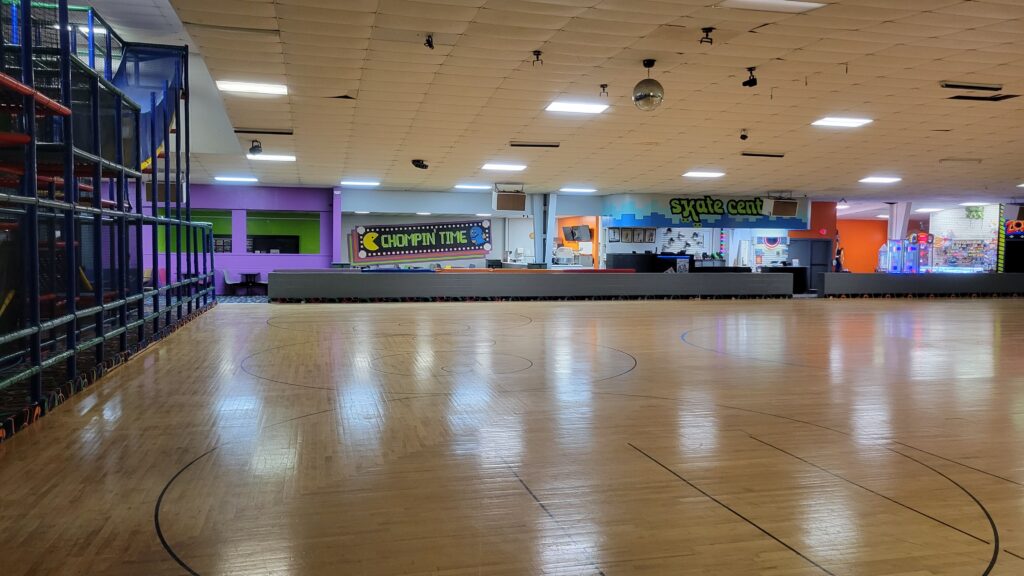
Starting Line for Races
When kids want to go fast, or race one another, you’ll need a starting line and some small x’s on the floor to help the floor guards place four cones for racers to skate around. Some rinks will hang a checkered flag from the ceiling to indicate the finish line.
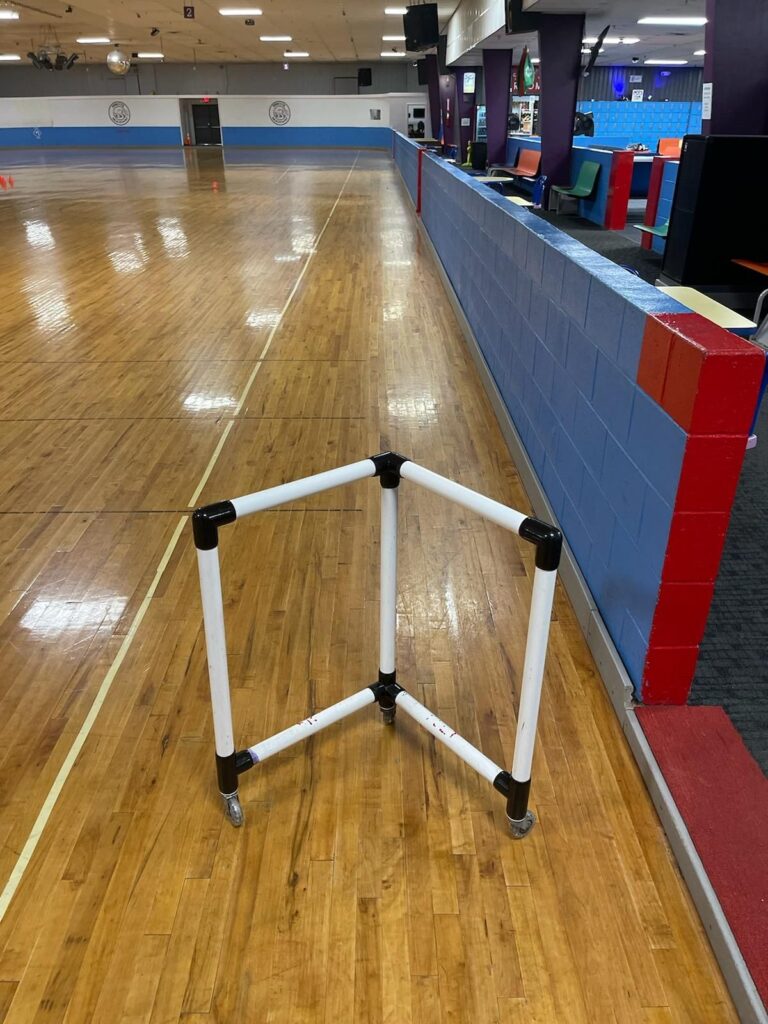
A Slow Lane for Skate Mates
Beginners will always gravitate toward the wall during public sessions, so let’s keep them there. And that means skate mate trainers as well. It keeps the traffic flow moving, without having a little kid zipping in and out of traffic, messing up everyone else’s good time. Kick them off the floor for shuffle skate and turn that lane into “shufflers only” for a song or two or during a Shuffle Skate Night. The Rexers and beginners don’t belong on the floor together.
